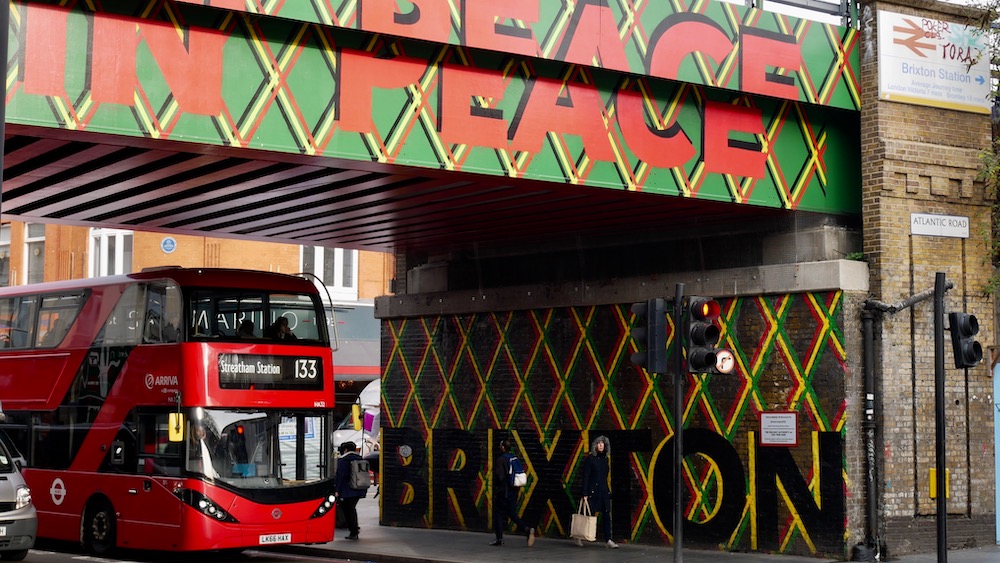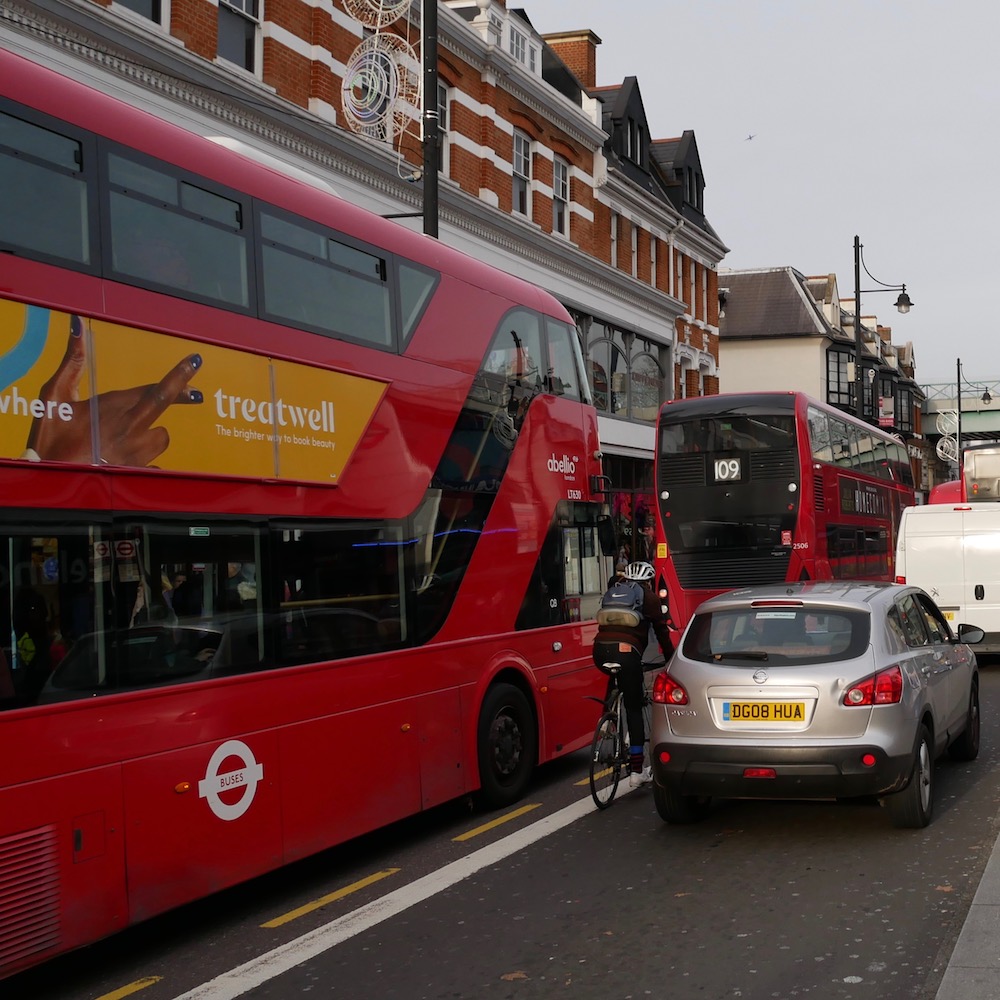
Lambeth council is asking for comments on its draft plan for transport in the borough over the next three years. The consultation on the plan runs until 17 December.
Transport is a big issue for Brixton. The area can feel dominated by motor traffic, although most journeys are made by public transport and most households do not own a car. With average nitrogen dioxide on Brixton Road at 250% of the legal limit, pollution levels are not only illegal, they also lead to more cases of asthma and, across London, cause thousands of premature deaths each year.
Pedestrians complain of long waits at crossings and cycling is unpleasant. Heavy traffic and lots of buses mean Brixton Road is regularly named as having the most toxic air in the city. The London Mayor published a new transport strategy in March which set out plans “to transform London’s streets” with more people walking, cycling and using public transport. Lambeth council has a “local implementation plan” (LIP) which describes how the council would deliver the mayor’s objectives over the next three years.
Transport for London (TfL) provides most of the funding for borough transport projects and the LIP includes the council’s delivery plan and big strategic projects that will need funding from TFL.
The Lambeth plan has some bold sounding principles and long-term objectives – “pedestrians to have genuine priority on streets” and for “traffic levels to fall significantly”. “Healthy Routes” connecting town centres are also promised. Some proposals could have a big impact on Brixton. An application for funding to create a “Liveable Neighbourhood” in central Brixton with “a public realm much better suited to walking and cycling” is included. Improvements for cycling from Streatham through to Oval could come as early as 2022 if “Cycle Future Route 15” proceeds, though this looks an optimistic timeframe given the slow progress on back street “Quietway” cycling routes in the borough. There is talk of “feasibility work” for an Overground railway interchange at Loughborough Junction.
The Green Party, the official opposition in Lambeth since the May local elections, and local campaign groups seem to be in agreement that the plans do not go far enough:
Green Party councillor Nicole Griffiths, who represents St Leonard’s in Streatham, says that the council plan “does not present the radical, innovative vision that is needed to make Lambeth a healthier, cleaner and greener place to live and work.” She says Green Party councillors share the council’s aspirations for “a big change” in the way we use transport, and is putting forward “ambitious and concrete proposals to start to make this happen as a matter of urgency”.
Mums for Lungs, the locally based air quality campaign group, believes “there are lots of fine words but little real action” in the plan. “Air pollution in Lambeth is a public health crisis and needs to be addressed as a priority,” says the group. “More than half of it is caused by road transport, yet the ‘priority actions’ will have very little impact on changing congestion and traffic and reducing air pollution. “Lambeth council needs to strongly disincentive drivers from getting in the car or driving through the borough. We will continue campaigning for school streets, closing rat runs, and an effective crackdown on idling.”
The Lambeth branch of the London Cycling Campaign says: “We agree with the objectives – low-traffic neighbourhoods and protected space on main roads have led to immediate increases in cycling elsewhere in London.”
But it goes on to say that the council’s plans show little funding for these projects, with most money continuing to go on measures like training and traffic calming that have failed to increase cycling levels in the past. “We want to see a much greater focus on removing rat-running traffic from our neighbourhoods.”
Cllr Claire Holland, the council’s cabinet member for environment and clean air said the council is “very clear” in its transport strategy, and that “our focus is around improving the accessibility of Lambeth’s transport network so everybody has the same access and opportunities, improving air quality and making the borough safer and more attractive to encourage walking and cycling”.
She said that road safety is a top priority and that the council is “firmly committed” to Vision Zero– an international road safety project to achieve a transport system with no deaths or major injuries involving road traffic – for London.
“Walking, cycling and clean public transport lie at the heart of our strategy, working to make our roads safer for all road users and finding a system that keeps people moving.
“By working with residents, local groups, the Mayor of London and TfL, we are making big improvements throughout Lambeth so that our residents can lead healthier and more active lives.”
You can complete a survey at bit.ly/Lambeth-DTS or submit comments to transportstrategy@lambeth.gov.uk




